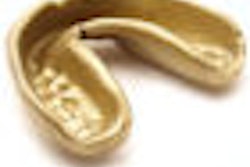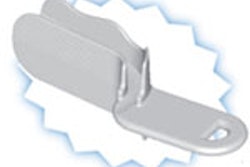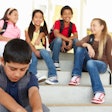
NEW YORK (Reuters Health), Jun 19 - Baseball, the American pastime, appears relatively safe compared with other high school sports, researchers report. Nonetheless, injuries do occur and many could be prevented, they say.
About 12% of high school baseball injuries result from players being hit by a batted ball, and nearly two-thirds of these injuries are to the head and face or mouth and teeth, said Christy Collins, of the Research Institute at Nationwide Children's Hospital in Columbus, OH.
"We strongly recommend that at least mouthguards and eye protection be used by all pitchers, infielders, and batters at the high school level," Collins told Reuters Health.
Collins and Dr. R. Dawn Comstock reviewed baseball injuries that occurred at a representative sampling 100 U.S. high schools over two seasons, reported by high school athletic trainers to an Internet-based injury surveillance system.
Their findings, reported in the journal Pediatrics, indicate that 1.26 injuries occur per 1,000 baseball exposures among high school players. By comparison, a previous report showed 5 injuries per 1,000 high school rugby exposures.
Overall, most baseball-related injuries were ligament and muscle strains or bruises that resulted in less than seven days of lost playing time, the researcher report.
Most injuries were to the shoulder and ankle (nearly 18% and 14%, respectively), followed by injuries to the head and face (about 12%). Injuries to the hand/finger and thigh/upper leg accounted for another 9% and 8%, respectively.
Compared with other baseball-related injuries, a greater proportion of those associated with being hit by a batted ball were to the head and face (48%) or mouth and teeth (16%). Eighteen percent of the hit-by-batted-ball injuries required surgery, compared with about 7% of injuries acquired from other baseball activities.
Collins and Comstock stress that efforts to make the sport even safer could significantly reduce injury rates.
"Future research is needed to investigate why face shields, eye protection, and/or mouthguards are not currently being commonly used at the high school level," noted Collins.
By Joene Hendry
Last Updated: 2008-06-18 12:25:12 -0400 (Reuters Health)
Source: Pediatrics, June 2008
Copyright © 2008 Reuters Limited. All rights reserved. Republication or redistribution of Reuters content, including by framing or similar means, is expressly prohibited without the prior written consent of Reuters. Reuters shall not be liable for any errors or delays in the content, or for any actions taken in reliance thereon. Reuters and the Reuters sphere logo are registered trademarks and trademarks of the Reuters group of companies around the world.



















